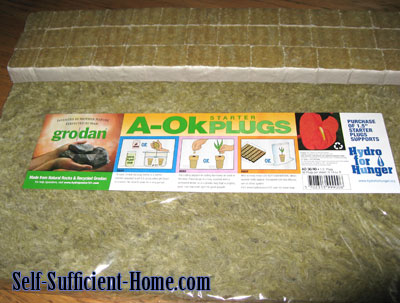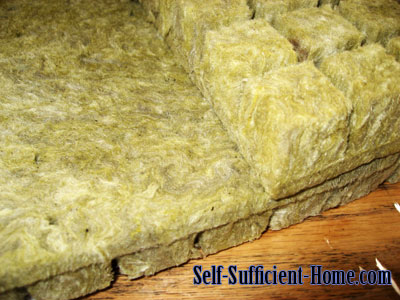Made of melted and spun rock, Rockwool is an inorganic man-made material used as a growing medium. More commonly, rockwool or stonewool is used as insulation.
Basaltic rock, a volcanic rock, constitutes the highest quality Rockwool because it is non reactive to nutrient solutions. Other ingredients include chalk and binders.
Rockwool material has been used since the mid 1800’s in various applications but not until the 1960’s was it discovered that the mineral composition could be modified to promote plant growth.

The material is comprised of 46% Silica, 16% Calcium, 14% Aluminum, 1% Magnesium, 8% Iron, 2% Sodium, 1% Titanium, 1% Potassium, and 1% Manganese.
The production process includes heating the basaltic rock to its melting point, spinning it in a similar fashion to cotton candy to create small fibers, and then compressing it into sheets.
The Rockwool is ultimately formed into a variety of shapes and sizes from small individually wrapped 1” cubes to 4” cubes, as well as full sheets of multi blocks which fit into flats, and loose/ granulated Rockwool sold in bags.

The benefits of using Rockwool:
Rockwool provides exceptional water retention and air flow creating optimum conditions for root growth and nutrient absorption. Grodan Rockwool claims their Rockwool, when hydrated and allowed to drain naturally, contains 80% solution, 15% air space, and 5% Rockwool fiber.
Rockwool is practically mess-free as there is no loose soil to spill.
As mentioned above, Rockwool’s variety of shapes and sizes provides the ultimate convenience to the home gardener.
The disadvantages of Rockwool:
Naturally, Rockwool has a high pH level which is not conducive to healthy plant growth and requires a pre-treatment. Don’t be alarmed, the pre-treatment is simple for preparing rockwool for horticulture use.
The fine particle size of Rockwool can be a skin irritant.
Used Rockwool can be a challenge to dispose of. Grodan suggests a few options: reusing it for other plants by removing root particles and simply replanting, adding Rockwool in small quantities to compost bins, tilling it into soil, or building flood barriers or raised beds.
 Timberline Homestead A self sufficient homesteading life
Timberline Homestead A self sufficient homesteading life
One comment
Pingback: Starting Vegetable Seeds - Gardening Our Self Sufficient Home